One of the important directions of the national culture of Ukraine has long been weaving. Weaving can be attributed to both economic activity and folk art. It has a centuries-old history and deep traditions nurtured by many generations. Evidence of the presence of weaving production on the lands of the Eastern Slavs in ancient times is archaeological finds from early Neolithic cultures. The production of fabrics at home in such quantities was due to the urgent, purely practical need of man for fabrics to dress, decorate his home, and use them for economic purposes. The emergence and development of weaving occurred under the condition of the progress of the people's culture, both spiritual and material. There was a certain evolution of the socio-economic stratum, which contributed to the development of weaving. Weaving turned out to be a very susceptible matter to changes in society, because it was imprinted with historical events, natural and geographical parameters, economic activity itself with its characteristic qualities, and the people's demands in the cultural and aesthetic sphere. It also showed the ethnocultural relationships of Ukrainian weaving with a similar direction of activity of neighboring countries and peoples. All this formed certain features and differences of the country's weaving - national, regional and cultural.
The material for the development of weaving was spinning fibers obtained from wool, hemp and flax. This became natural, considering that Ukraine had cattle breeding and grain farming as leading economic sectors. Sheep breeding made it possible to use sheep wool to create fabrics, and grain farming grew crops suitable for the subsequent production of threads.
Most likely, before flax and hemp, wool yarn was the most widely used material, because hemp, and even more so flax, began to be grown much later than wool. With the advent of plant-based threads, processing fibers and spinning yarn to create fabric became one of the most important household chores in every family in the villages. For more convenient spinning, spindles were created, on the lower end of which circles of clay or stone were stretched - the so-called distaffs. They strengthened the rotation of the spindle. This is how the first optimizations in the weaving process were made.
The vertical loom was the first weaving equipment, a step towards mechanization of the process. The main part of the structure was a frame installed vertically. Longitudinal threads were stretched onto it, which became the basis of the future fabric. Small weights were tied to them from below, which made the process more convenient. The threads were divided into even ones - they were tied to one row of such weight increasers, and odd ones - which were respectively attached to another row of weights. This helped weavers lay transverse threads between the warp threads - manually or with the help of a thin stick called a "glitsa" and nailed the threads to the edge of the product being manufactured. The form of such looms has been preserved to this day for the manufacture of certain types of woven products, for example, carpets, belts, mats, etc.
Archaeologists very often find parts of spinning and weaving equipment: weights made of stone or clay - to keep the base taut and convenient to work with, spinning wheels for spindles. This allows them to draw conclusions about the widespread distribution and fairly high level of this area of economic activity during the Trypillian culture.
The fabric itself, of course, has not survived to our times due to its less durable qualities. However, its prints are found on ceramic dishes, and this gives reason to believe that even in those days the Slavs were familiar with fabric weaving techniques, such as linen or rep weaving, for example. It can be argued that they knew about dyes for fabrics, making them from ocher, kaolin or other natural dyes - after all, on the same clay figurines you can see not only the interweaving of the fabric, but also color prints. Trypillian ceramics are characterized by a high level of craftsmanship, and polychrome patterns were used - all this was also characteristic of decorating various household items, fabrics from which clothes were made, as well as for furnishing the home. During excavations of catacombs or burial mounds, fabrics with colored stripes are found, that is, this is another evidence of the ability of the masters of that time to dye.
In the Iron Age and during the period of Scythian culture, the weaving craft experienced a considerable rise. According to the finds of burial mounds (Chortomlyk, for example, or Kul-Oba, etc.), it can be said with certainty that Scythian women were skilled in weaving. Of course, the tools of the wealthy and the poor were different: for example, rich women took spindles with a bone set, of the Greek type, and the less wealthy - simpler tools made of wood, clay and awn.
Over time and with the development of the evolution of society, weaving tools were gradually improved, as were the technologies for creating woven products. This can be traced by archaeological finds in different regions of the country. Distaffs, weights and spindles have already been mentioned as weaving tools, in addition, there are also scissors for shearing sheep, combs for combing yarn - made of iron and bone, etc.
It is worth mentioning separately the village of Rayki in the Zhytomyr region, where a lot of different materials were found at one time. Here were dug up whole balls of woolen yarn, flax threads, remains of hemp seeds, although, of course, decayed hemp bags and fragments of ready-made fabrics for clothing. Here was also found a reel, with the help of which the threads were wound, it was made of wood or bones, as well as a bone tablet with small holes in the corners, similar to wooden crosses for weaving belts, etc.
In the Raikovets settlement, parts of a horizontal loom were found, which was much more advanced than a vertical loom. This find is of great importance in the development of weaving. This loom had appropriate devices for separating the warp threads. This indicates a significant progress in weaving production in the 11th-13th centuries. on the territory of Kievan Rus.
During this period, many monuments were found, but the most significant among them were spinning wheels, which depicted animal amulets, crosses, circles, dashes, etc., endowed with magical power. Some of them were marked with female names, various initials, etc. For example, one of the spinning wheels, which was found in 1885 in Kyiv, near the Desyatynna Church, was marked with the name of a woman with the Old Slavic name of Potvora. Two more similar ones were found in 1935-1937, also near Kyiv, in Vyshgorod, and the names Nevestoch and Iuliana were marked on them.
Why were these marks made? Scientists have a version that these marks are evidence of the collective nature of the activity aimed at making fabric. The craftsmen tried not to mix up their tools of labor, so they marked them. Collective spinning was characteristic of the times of the clan system, then the weaving raw materials were processed in rooms that were specially equipped with everything necessary for this. Vechornytsia, toloki, dosvetki - all these forms of joint labor are an echo of collective spinning.
This occupation was more typical of women, girls, teenagers, and young women. Every peasant house had to have its own loom, and if a woman did not know how to use it and did not spin cloth at home and perform all the related weaving work, it was considered that she was not a full-fledged member of her community.
Spinning and weaving had their patron - in Kievan Rus it was the goddess Mokosh. Prince Volodymyr Svyatoslavovich at one time included her among the pagan gods. Her image was found on a small fragment of a weaving loom. The ancestors believed in the power of Mokosh, hoped for her help and protection, that she would save them from evil forces and evil spirits.
The processes of preparing raw materials, which required careful and focused work, namely spinning, weaving and finishing the fabric at the final stage, were reflected in signs, rituals and ceremonies. Some of these rituals have survived to our time. For example, these things could not be done on Friday.
Archaeological materials are organically supplemented by chronicle references and testimonies of the 10th-11th centuries. In them, one can find names for concepts characteristic of weaving activity: linen and hemp fabrics for economic activity were called “uzchina”, “yarych”, “tovstina”, coarse cloth with a natural color was called “sermyaga”, and gray cloth was called “siryachina”.
Chronicle sources from the 13th-14th centuries mention the names of actions related to weaving: "to act", "to beat", "to beat", which indicate the skills of mastering various weaving and braiding techniques, and indicate that the craftsmen were familiar with auxiliary textile techniques.
Over time, the productive forces developed, and the class stratification became larger and more contrasting, so among the peasants, the most capable weavers and entire families began to stand out - a kind of dynasties. They specialized in creating fabrics, tablecloths, cloths, borders, etc. They not only satisfied their own needs, but also produced products for sale and exchange.
Thus, we see how, from the 9th-10th centuries, weaving grew from a familiar household occupation into a separate craft, which exists in these two different forms to this day.
Some artisans remained to live in their villages, some moved to small towns and cities, closer to trade routes, feudal courts, monasteries, and worked for landowners. At first, artisans in the villages were a rather privileged class of the population, but feudal relations developed, which led artisans to become increasingly dependent on the court. They were forced to pay taxes with their products, which was not so convenient for them. Artisans who remained in the villages paid taxes and duties with their linen, towels, tablecloths, and sometimes patterned bedspreads, which were instead of carpets - the so-called guni. Urban artisans paid with cloth.
However, no matter how inconvenient it was from the point of view of duty to allocate artisans in cities to a separate type of craft, in general it played a major role in improving the technologies of fabric production and, accordingly, improved the quality of finished products. Labor productivity increased, productive forces developed, which led to the possibility of replacing rent in kind with money. This reduced the dependence of craftsmen on feudal forces, contributed to the development of weaving as a free separate craft. Thus, in the 13th-16th centuries. certain weaving centers were formed in the country. These were Kyiv, Lviv, Chernihiv, Lutsk, Kamianets-Podilskyi, Kremenets, Belz, etc.
Having become economically independent, weavers in the cities acquired greater skill and began to unite into guilds, which began to exist in various cities and towns of Ukraine, such as Sambor, Gorodok, Lviv, Drohobychi, Stryi, Yavir, etc. The guilds contributed to the development of the skill and productivity of the masters, the improvement of their technologies. They had their own approved statutes, privileges, clear rules that regulated the activities and lives of the guilds and their members. The specialization of weavers in certain types of fabrics, finished goods from them, developed. The products were sold in local markets, in addition, they were prepared for export. However, not all artisans wanted to join the guilds, such renegades were called "partachs". Their opportunities for selling their own products were limited, as well as for direct labor. The guilds gave rise to a new, larger association - the manufactory as a new form of fabric production with a serious organization. They arose in the 17th century. and existed until the middle of the 19th century. Their existence was possible mainly in centers with local raw materials.
For manufactories, it was characteristic to hire workers, divide manual labor into processes: spinning, dyeing, twisting threads, weaving. The division of labor provided the enterprise with greater profitability. Enterprises also specialized in certain types of goods: linen, carpets, cloth, silk or gilded fabrics, etc.
Fabric factories were mainly concentrated in Podillia. Industrial cloth factories were in Rohatyn, Zalozhetsi, Mynkivtsi, Golokhvasty, Korets, etc. Kyiv, Lviv, Medzhybozh, Nemyriv, Kamianets-Podilskyi, Stanislav specialized in silk and gold fabrics. These factories were in great demand on local and export markets. But over time, the industry developed, cheaper fabrics from factory enterprises spread, this led to the complete decline and cessation of the functioning of factories and workshops in the middle of the 19th century. in general.
About manufactories, we can say that they were a form of transition of labor organization from workshops and small handicrafts to capitalist machine industry. For a certain time, two forms existed in parallel - home production of fabrics and their production in workshops (14th century), manufactories (17th-19th centuries), in enterprises and factories (19th-20th centuries). Peasant weavings retained quite a few features inherent in the period of subsistence farming. Their own raw materials were processed. In those centers that were located near trade routes or industrial centers, fabrics were mostly produced for sale.
In the second half of the 19th - early 20th centuries. the production of fabrics was at home, in the system of crafts and production. The weaving industry was especially developed in the central regions of Ukraine, most of all on the Left Bank. Gradually, industrial fabrics began to replace folk ones. At the end of the 19th century. there were attempts to restore the traditions of folk weaving, for which exemplary weaving workshops were organized in the central and eastern regions of the country at the provincial zemstvos. In Podolia, Galicia, Bukovina, Volyn, weaver societies were founded, and they also had workshops and schools. These associations and formations played a major role in the preservation and growth of traditions. But even they could not influence the general development of folk crafts and stop its decline.
The more the textile industry developed, the more factory fabrics were in demand among Ukrainians in their daily lives and everyday life. Home-spun products intended for the household were gradually replaced by individual fabrics. In addition, at this time, the forced collectivization of Ukrainian villages was taking place, sheep breeding, sowing of flax and hemp, which were the main raw materials for the manufacture of fabrics in home production conditions, was sharply reduced. The central regions of Ukraine felt these processes most of all, in Polesie, in the Carpathian region this was less noticeable. As a result of the fact that raw materials became scarce, local weavers learned to use factory yarn made of cotton - zapoloch, bamboo, cotton, or woolen, partly silk or metal threads.
In the 1920s and 1930s, in places that had previously been centers of weaving, artels were created to produce fabrics. In the 1960s, most of them were merged, expanded, and later reorganized into factories or artistic and production associations. Many of these enterprises are still operating today.
More advanced horizontal looms began to be used for the production of fabrics. They have a device for moving the warp threads - they are lowered or raised with its help. The threads are evenly spaced across the entire width, in addition, this provides uniform nailing of the weft threads. In the production of fabrics, two systems of threads are intertwined - the warp and the weft (i.e. the weft), this is done thanks to a different number of footrests.
Woven products can be made of linen, wool, hemp, cotton, or mixed raw materials - combined, when two or more types of yarn were used in their manufacture, respectively.
Fabrics are also distinguished by their manufacturing technique: they can be plain, twill (remy-shuttle), carpet, woven, or pile.
The simplest plain weave is made on two footrests, twill - on three, four or even six footrests. Twill fabrics have a special small pattern in the form of lines, zigzag or oblique, or diamonds. The warp and weft threads, when laid in different directions on the surface of the fabric, create light and shadow transitions in tones. The twill technique is very often used in weaving folk fabrics, bedspreads, tablecloths, spare parts, etc.
The perebye technique is used differently: the background of the fabric is made by twill or plain weave of threads, with a different number of remizok helping in this. Individual threads of the warp are additionally lifted manually or with simple devices (rails, rods) - this is how the main pattern is formed. For perebye fabrics, a relief pattern that protrudes above the background of the fabric is characteristic, it can be across the entire width of the finished product or in certain areas of it. The threads of the pattern are laid in different ways, accordingly, the perebye techniques are divided into two groups: classic perebye and a variety of its variants. Variants include “perebye”, weaving “on rods”, “under the board”, “under the canvas”, “by selection” or other methods. The perebye technique is used to make patterned stripes on sackcloth, tablecloths, spare parts, towels, aprons, etc.
Let us recall the “laid” technique for carpets – “in the eyelet”, “on the oblique thread”, “on the straight border thread”. In this technique, weaving threads of different colors are laid in separate areas across the entire width of the product according to the pattern, they are intertwined with plain weaving. This is a very common technique throughout Ukraine. It is used to make carpets, bags, towels, aprons.
The pile technique is divided into two types, and it is used to make fabric with looped and split pile. The background for it is thin yarn, short ends of thicker and softer threads or loops hanging freely ("curls"), which later create pile. They are laid in places of patterns or across the width of the product, solid. This technique is used to create bedspreads in Bukovina, in Polissya - ryadna, guni (Lemkov region, Boykiv region), kotsy (Poltava region, Kharkiv region).
The basis for classifying folk weaving products is the types of raw materials used, the technique of fabric production, the purpose of the finished product by function, and the place of production.
Regarding the functional purpose of the fabric, all finished products can be divided into three groups: for creating clothes, for underwear and for arranging the home. These are fabrics for bags, for men's waistcoats, outerwear for men and women, shirts and scarves, etc. They produced solid items for women's waistcoats (aprons, spares, sheets, humpbacks), and made additions to both men's and women's costumes - belts, etc.
According to their functional tasks, fabrics for interior decoration are divided into the following: tablecloths - for covering tables, bedspreads - for making beds, towels, carpets, sackcloths - for decorating and insulating walls, walkways, rugs and carpet mats - for floors, etc. Both traditional fabrics and modern new types of woven products were used: rugs, curtains, decorative napkins, capes, etc.
Among the fabrics that have an economic purpose is burlap.
The centers of fabric production in Ukraine were well-known industrial art centers, such as Sumy, Bohuslav, Dightyary, Lviv, Kosiv, Reshetylivka, Kolomyia, etc. Although the fabrics are related in raw materials and techniques, in each local center they have their own characteristics, inherent only to this area and center.
The production of fabrics at home has significantly decreased today. Their production continues in the Carpathians, in Polesie, and in some places in the western, eastern, and central regions of Ukraine. The most skilled weavers have remained, continuing the weaving craft and its principles and foundations to our time, preserving the secrets of making fabrics used for finishing and decorating modern clothing and housing.
Most of the products are now made at folk crafts enterprises or in production and art associations. They employ many weavers who have preserved their talent and are increasing their knowledge and skills. Artists and craftsmen of enterprises and factories create fabric samples for small-scale and mass production, using their skill and creative abilities.
Among the weaving enterprises, it is worth mentioning the factories of artistic products in such cities as Pereyaslav-Khmelnytskyi, Boguslav, Dihtyary, etc. The Krolevets factory of artistic weaving is the most famous in Ukraine. It produces fabrics that decorate modern housing, interiors for public institutions and enterprises, and for creating clothes. Its finished products include decorative towels, bedspreads and tablecloths, pillowcases for sofa cushions, carpets, napkins, fabrics for women's clothing, etc. Krolevets towels with enlarged geometric motifs of rhombuses, rosettes, images of the "tree of life", geometric-vegetable, flowers, cockerels, birds, human figures, etc. are very common.
The Boguslav factory produces fabrics for interiors and clothing: runners, towels, tablecloths, napkins, fabrics for dresses, skirts, aprons, etc. These are very refined fabrics, using enlarged or small-scale ornaments. The traditional elements of these products are stars, rhombuses, columns, and lattices, which are combined with each other, alternate, and thus act as either the main or auxiliary motif.
The Dihtyarivskaya factory uses the rich traditions of the widely known Chernihiv weaving of fabrics for sheets in its activities. In ancient times, women's waist garments - sheets - were made from such fabrics. They are characterized by a combination of various weaving techniques - linen and pereby in all its variants, for the most part, as well as a peculiar checkered pattern. The team of the enterprise, which carries creative abilities, creates, using samples of sheets worn in ancient times, entire compositions of decorative carpets, bedspreads, curtains, skirts, which preserve both traditional ornaments and have modern notes. The main motifs of these fabrics are rosettes, rhombuses. The products are characterized by rich blue, orange, ocher-golden, brown, purple-cherry and green colors.
The folk weaving of the Lviv region and its traditions, nurtured over centuries, are continued by the team of professionals of the Lviv Art and Production Plant. It produces woolen fabrics for the further creation of interior decorations and clothing. Sackcloths, napkins, capes, pillowcases, runners, sets for recreation areas - all these are its works of a high level of craftsmanship. It also produces fabrics for the creation of ritual and festive clothing, costumes for groups with a folklore character, etc.
Hutsul weaving with its traditions and features is produced at the Kosiv Art and Production Plant. Weavers from mountain villages work here, united by the desire to continue and preserve the traditions and characteristic specifics of the region. The plant produces bedspreads with various patterns, chair covers, napkins, towels, borders, fabrics from which stage and festive costumes are made. The main motifs are bevels, rhombuses, wedges, cross-shaped figures and many other, no less interesting. The color range of Hutsul fabrics is rich in saturated warm colors - yellow, red, orange, and subordinate black, green, etc.
In Ivano-Frankivsk region, a center of Pokut weaving has recently been revived. It is located in Kolomyia. Sackcloths, towels, napkins, fabrics for dresses, coupon fabrics, for stage and folklore costumes. Characteristic features of the composition of this region are rosettes, rhombuses, curls, cross-shaped figures, etc. Red and cherry colors are emphasized with black, yellow or green.
At one time, the sparse "serpank" fabrics, from which the main women's dresses - namytki - were made in Polesie in the distant past, were forgotten. The features inherent in Polesie patterned weaving are recalled and introduced into the work. If we analyze the current state of artistic crafts, we can see that the traditions of fabric production are best learned when working at home, especially if there is a hereditary experience of the whole family and skills are passed down, carefully preserved, from mother to daughter and beyond. At the enterprises of artistic crafts, especially in recent times, labor productivity has increased significantly due to the mechanization of many processes, standardization and reduction of the range of finished products. These events lead, unfortunately, to negative consequences - unification, simplification of the finished composition, reduction of product quality and reduction of the variety of colors. In such conditions, the most experienced and talented craftsmen are likened to ordinary weavers who perform patterns developed by someone else, without having the right to express creativity and improvisation.

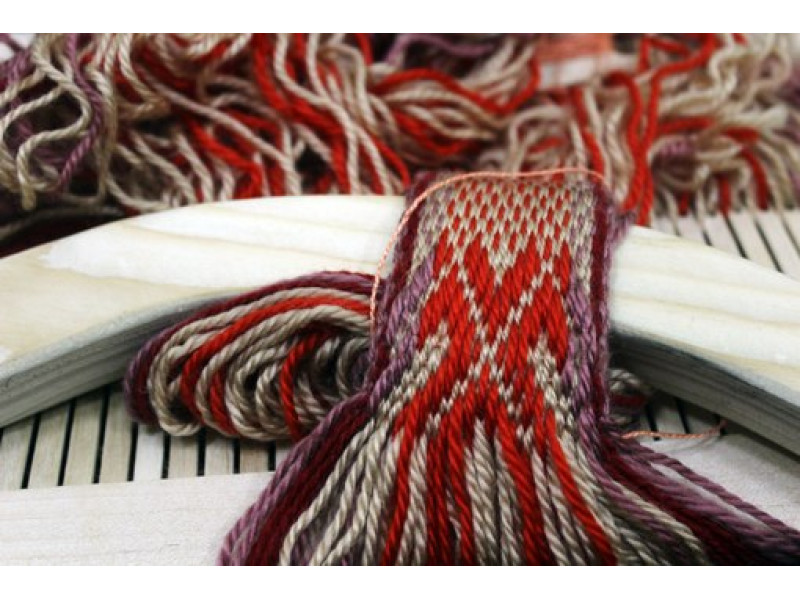







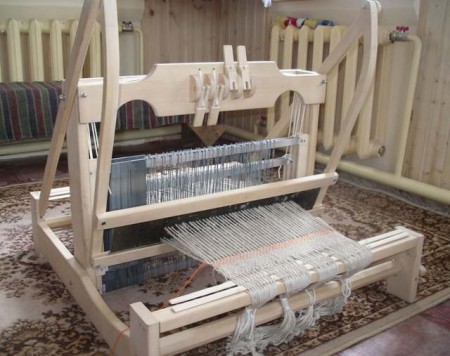












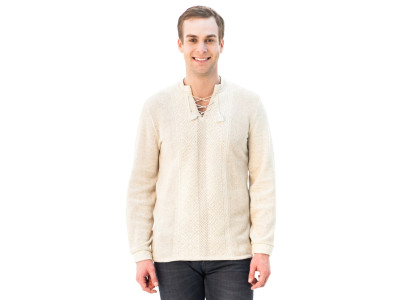
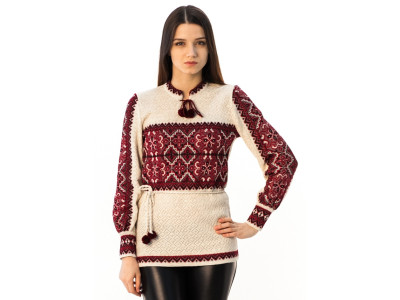
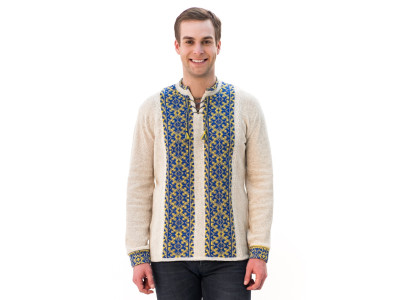
Write a comment